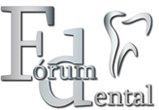There are two types of dental allergies:
- reactions that occur immediately or very quickly during treatment,
- and late-onset allergies that can take weeks, months or even years to develop.
Early allergic reactions may be caused mainly by the drugs used during dental treatment: local anaesthetics (most commonly lidocaine), antiseptics (sodium hypochlorite, hydrogen peroxide), topical agents.
Symptoms: A typical symptom of an allergic reaction in the short term is watery eyes at the site of the procedure or in the immediate vicinity. As the watery discharge spreads, rashes may appear all over the body, breathing becomes difficult, lips and eyes swell, and immediate medical treatment is warranted after first aid.
Late allergic reactions are mainly caused by metals, mainly nickel, but also chromium, cobalt, gold, copper and rarely titanium. Nickel hypersensitivity is often associated with chromium and cobalt sensitivity, palladium and copper allergies.In addition to oral symptoms and dry, chapped and cracked lips, the typical skin symptoms at the site of contact with nickel-containing metals – on the hands, forearms, neck and ear area in women – may be a sign of nickel hypersensitivity.
The complaints are usually completely resolved by the replacement or filling removal that caused them.
(Article source: http://www.allergiakozpont.hu/fogaszati)

